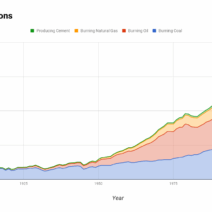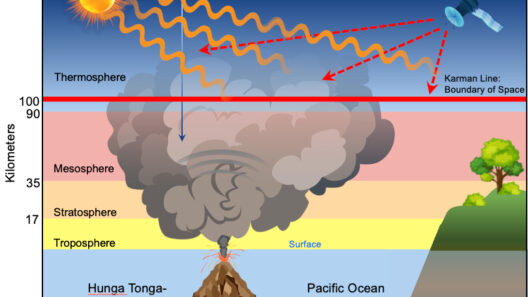The interplay between climate and the weathering process is a fascinating phenomenon that shapes our geological landscape. Understanding how climate affects the weathering of rocks is pivotal for comprehending broader ecological and environmental dynamics. Weathering, a natural process involving the breakdown of rocks into smaller particles, occurs through two principal mechanisms: physical weathering and chemical weathering. Both types are significantly influenced by climatic conditions, which in turn orchestrate the transformations that occur over time.
Physical weathering, often referred to as mechanical weathering, involves the disintegration of rocks without altering their chemical structure. The foremost climatic player in this process is temperature. Fluctuations in temperature can induce thermal expansion and contraction, causing rocks to crack. This phenomenon is particularly pervasive in environments marked by extreme temperature variations, such as deserts and tundras. In deserts, the stark contrast between hot days and cool nights exacerbates the breakdown of rock structures. In tundras, freezing temperatures can lead to ice wedging, wherein water infiltrates rock fissures, freezes, and expands, thereby exerting immense pressure on the surrounding rock.
However, it’s not solely the extremes of temperature that dictate the pace of physical weathering; the role of moisture cannot be understated. Rain, particularly under conditions of heavy precipitation combined with significant temperature changes, facilitates the mechanical forces at play. Water can seep into tiny crevices, freezing and thawing in response to daily temperature fluctuations, effectively acting as a natural hammer over time. This process of freeze-thaw cycles can lead to rock fragments being systematically pried apart from their larger structures.
While physical weathering operates primarily through mechanical forces, chemical weathering engaged in a nuanced dance with climatic conditions illustrates the profound influence climate has on elemental transformation. Chemical weathering involves the alteration of the minerals within rocks through chemical reactions, often necessitating the presence of water and a suitable temperature. Warmer climates generally accelerate chemical reactions; thus, regions with higher temperatures and abundant moisture tend to experience enhanced rates of chemical weathering.
The role of rainfall is particularly significant in the realm of chemical weathering. In humid and tropical climates, where rainfall is abundant, the increased availability of water facilitates hydrolysis, oxidation, and carbonation processes that chemically alter the minerals present in rocks. For instance, feldspar, a common mineral in granite, undergoes hydrolysis to transform into clay minerals, which are crucial constituents of soil. Consequently, regions characterized by lush rainforests often exhibit deeper soil profiles, enriched by weathered rock material, compared to arid or semi-arid landscapes.
Moreover, the composition of precipitation can also influence weathering processes. Acidic rainwater, which can form due to atmospheric pollution and the natural escape of carbon dioxide through soil respiration, enhances chemical weathering by accelerating the dissolution of carbonate and silicate minerals. This phenomenon is especially observable in karst landscapes, where limestone dissolution leads to the formation of distinctive underground features such as caves and sinkholes. Such landscapes are not simply a testament to the erosive power of water but also to the complex interactions between climate, chemical reactions, and rock types.
Interestingly, the frequency and duration of extreme weather events, which are becoming increasingly common in the context of climate change, play a pivotal role in shaping weathering patterns. Intense storms, characterized by heavy rainfall, can exacerbate erosion rates and promote rapid weathering of rocks, leading to significant alterations in both local geology and ecosystems. The cyclical nature of droughts followed by intense rainfall events creates an environment rife for accelerated weathering, as the stress of drying out followed by sudden soaking leads to increased physical breakdown.
Another critical aspect to consider is the role of vegetation in the weathering process, which is also modified by climate. In regions where the climate supports dense vegetative cover, roots of plants can penetrate rock fissures, exerting physical pressure and contributing to mechanical weathering. Additionally, the organic acids produced by decaying plant material and root exudates can enhance chemical weathering, further breaking down the rock. The relationship is reciprocal; as rocks weather and contribute to soil formation, they create a habitat conducive to vegetation growth, thus perpetuating the cycle.
In summary, the relationship between climate and weathering is multifaceted, demonstrating how climatic factors are intricately intertwined with geological processes. From the influence of temperature variations and moisture on physical weathering to the catalytic effects of temperature and rainfall on chemical weathering, it becomes clear that climate plays a fundamental role in sculpting our terrestrial environment. Understanding this relationship invites a deeper appreciation for the delicate equilibrium within which ecosystems operate and offers insightful perspectives on the implications of climate change on geological formations.
As global temperatures continue to rise and weather patterns become increasingly erratic, the consequences for weathering processes will likely be profound. The anticipation of altered weathering rates in both physical and chemical domains begs attention, as these changes could reshape not just the landscape, but also the vital resources such as soil and minerals that rely on consistent weathering processes. In this context, a shift in perspective is necessary; recognizing the critical impact climate has on weathering can lead to informed discussions about resilience and adaptation in a changing world.


